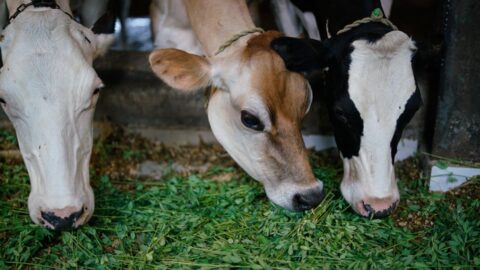Climate News: Creeping Shrubs and Record Heat
The author of today’s post, Lisa Moore, Ph.D., is a scientist in the Climate and Air program.
This week I came across several interesting articles related to climate, but two in particular caught my eye. In the first, scientists found that excess carbon dioxide (CO2) may be what’s leaving livestock with less food to eat. The other study explores the role of greenhouse gases on the record-breaking heat Americans experienced in 2006.
Morgan, et al. 2007. Carbon dioxide enrichment alters plant community structure and accelerates shrub growth in the shortgrass steppe. Proc. Natl. Acad. Sci. USA, 10.1073/pnas.0703427104.
For decades, woody shrubs have been replacing grasses in parts of the western U.S. This is a serious problem for ranchers because, as shrubs encroach into grazing lands, livestock have less food to eat. This new study from the U.S. Department of Agriculture suggests that CO2 may be a culprit, because prairie sagebrush is extremely sensitive to CO2 levels. In a five-year experiment in Colorado’s shortgrass steppe, sagebrush cover increased twenty-fold in areas that were exposed to higher CO2 levels.
Hoerling, et al. 2007. Explaining the record US warmth of 2006. Geophysical Research Letters 34: L17704.
Last year, the U.S. experienced record-breaking temperatures and deadly summer heat waves. Did global warming play a role? This study, by scientists at the National Oceanic and Atmospheric Administration, found that El Niño had little influence on U.S. temperatures. Instead, the researchers found that the greenhouse effect is now stronger than natural temperature variations. They concluded that "the record warmth was primarily due to human influences".











